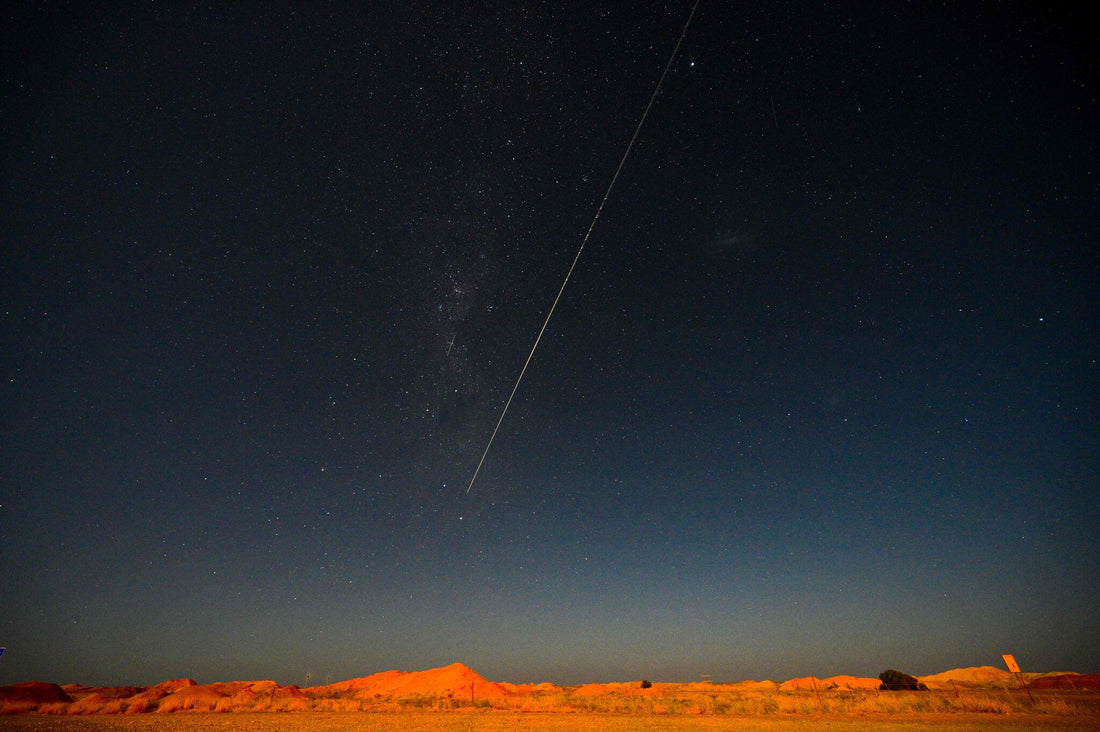
BREAKING: Alien Asteroid Samples Land In South Australian Outback
Share
The Japan Aerospace Exploration Agency (JAXA) goes two-for-two in harvesting asteroids after successfully dropping their latest cargo in the South Australian outback in the wee hours of this morn (Sunday, 6th).
Hayabusa2 - the successor to the first-ever mission to harvest an asteroid - dropped a small capsule with intact samples of otherworldly rock near Woomera, SA.
The samples came from the near-kilometre-wide asteroid named 'Ryugu', some millions of kilometres away and therefore should be subject to quarantine.
JAXA's Haybusa1 was the first to lug space samples back to Earth in 2010. However, Hayabusa1 only managed a meagre haul under 1 milligram.
Hayabusa2 boasts a load exceeding 100mg, a bountiful sum for its six-year trek into the deep unknown. It's also from an exceptional type of asteroid - an ancient "C-type" that houses water and carbon-based organic compounds.

In an overview of Hayabusa2, JAXA officials wrote, "The materials that formed the Earth, its oceans and life were present in the primordial cloud from which our solar system formed. In the early solar system, these materials were in contact and able to chemically interact within the same parent objects. These interactions are retained even today in primitive bodies (C-type asteroids), so returning samples from these bodies for analysis will elucidate the origins and evolution of the solar system and the building blocks of life,"
Now we have the abundant sample Earth-side, they can be studied by scientists in state-of-the-art labs around the world. A little bonus is the 'purity' of the material recovered.
Sure we have access to meteorites that pound Earth. Unfortunately, they're tainted from the entry into our oxygen-rich atmosphere travelling at 20,000km/h plus. As well as becoming covered in soil, stone and sand.
The Journey Home

After launching in December 2014, the near 700kg spacecraft met with Ryugu on June 27th, 2018. While aboard the hurtling space rock, Hayabusa2 grew to know the asteroid intimately, studying it with mini-probes and cinderblock-sized landers called MASCOTs (Mobile Asteroid Surface Scout).
The main Hayabusa2 craft made two (and a half) trips to the surface of Ryugu during its tenure, both times nabbing some samples. The first, in February 2019, dipped up some surface material while the second in April was a bit more violent.
The unsuspecting asteroid was subject to a 2.5kg copper projectile impact that created a 10m wide crater.
Why?
So in July Hayabusa2 could swoop in and collect some of the uplifted material. Most of it deeper than the first excavation, thanks to the blast.
The two samples were kept separate so during analysis a comparison could be made between space side material and that which sat deeper to the core of the asteroid. This is an important distinction for a C-class asteroid that houses the building blocks for life. While the surface is pounded by life-killing space radiation, the deeper layers are not.

Hayabusa2 left the asteroid on the 19th of November last year and made the 300 million-ish kilometre trip home.
As the craft made the home stretch - about 3.6 million clicks away - it fired the engines in a series of burns to realign its trajectory with Earth. And cut a direct path to a 10km patch of the Australian outback, the equivalent of hitting a 5 cent piece from 2km away.
At a distance of approximately 220,000km away, Hayabusa2 released the pizza-sized return capsule. While the sample headed for South Australia, Hayabusa2 did not.
For it is needed elsewhere.
Specifically at the asteroid (98943) 2001 CC21 in 2026 and yet another, 1998 KY26, in 2031. Tip: the beginning number of asteroids designated name is the year it was discovered.
The capsule has no engines or propulsion of its own. But like the Australian fast bowler, Hayabusa2 lobbed the samples at 43,190km/h with confidence and precision.

And at 3:28 am on this holiest of days, the sample crafts parachutes deployed, allowing a safe touchdown at 4:17am local time.
Recovery crews immediately set about finding the samples via helicopter. After finding the craft, the comparatively short trip to JAXA's Extraterrestrial Sample Curation Center in Japan will house and study the samples.
Then some of the material will be parsed to select labs around the world for additional analysis. We might find answers to questions about the early life of our solar system and the meagre beginnings of life on Earth.
JAXA's next big move is called Martian Moons Exploration (MMX) - a return trip to and from Mars moon Phobos with a sample similar to Hayabusa2 on Ryugu.
#Space_Aus




